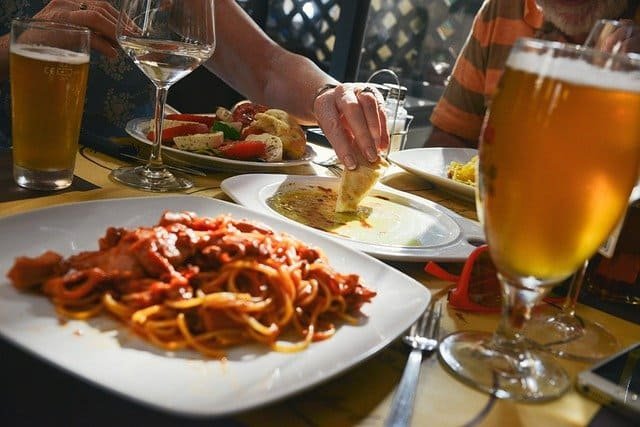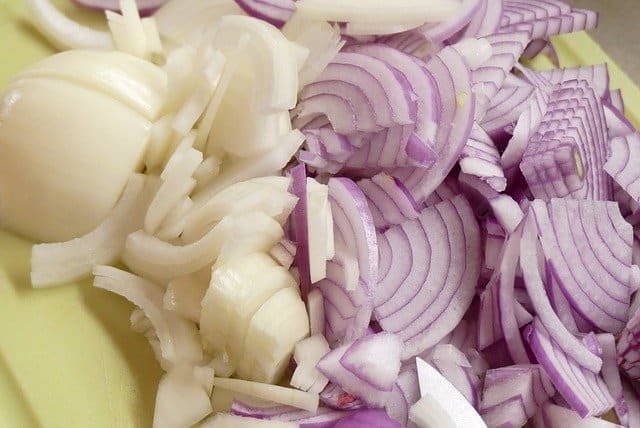How to control your restaurant’s food cost

Are you struggling with how to control food cost in your restaurant?
Let’s discuss several methods, tips, and tricks you can do right now about how to control food cost in your restaurant. We first need to understand that today’s market is very competitive with new restaurants constantly opening. Controlling your food cost in this fast-paced industry has never been more challenging than in today’s economy. Customers demand the highest quality for the best possible price. While that’s exactly what we want to deliver, several factors affect the cost of the goods you produce. Let’s dig in.

Prep Sheets
The first step to gaining control of your food cost is writing Prep Sheets daily. Any professional restaurateur will tell you that flying by the seat of your pants on this issue simply won’t cut it.
As a starting point, conduct a comprehensive count every morning. Then use previous sales data to determine the prep levels for that day. If you’re unsure how this works or need more information, I’ve detailed the exact system I use here.
Once your prep sheets are written and distributed to the proper staff, follow up with some spot-check validation to ensure the sheets are being followed. This will help to avoid over-prepping and under-prepping.
Portion Control
Controlling food cost requires vigilant portion control. There are several ways to impact this area.
- Prep Audit – Random audits of prepped items by weighing to ensure the product falls within range while examining quality and consistency.
- Proper Serving Utensils – Have the correct size utensils, scoops, cook spoons, measuring cups, etc. on the line that matches food cost standards.
- Well-Trained Staff – Investing in a great training program sets an expectation and builds consistency for standards and procedures.
- Constant Coaching – Correct issues immediately and always coach the desired outcome.
Menu Engineering
Menu Engineering is an essential element of controlling food cost. Careful design and pricing of your items correctly sets you up for the success you desire.
- Costing – Every item on your menu has a cost associated with it. You have to know exactly what it cost to produce that item.
- Pricing Strategy – Be comparable in the market with fair pricing. Balance is the key to avoid being over-priced or under-priced.
- Four Corners – People typically read menus in “Z” pattern. Placing profitable items in these areas is a great design strategy.
- Reduce Menu Size – If your menu is large, consider reducing the size. Having too many items is cumbersome for efficiency. Large menus give guests a perception of low value. Serving fewer products, with better execution solves both.

Top 5 Product Mix
The top 5 products on your menu have the highest impact on controlling food cost. Proper execution of these items is essential for consistency and stability. Some strategies to employ:

- Photos – Posting pictures of these items in the kitchen area where all employees can see them often. This increases awareness of what the items are, how they should look on the plate, and the importance of proper execution.
- Daily Touch Points – Take 5-10 minutes daily in a shift meeting to discuss one or two items. Do things like show what the proper portion size looks like on the plate.
- Emphasize & Incentivise – Having a sales contest around a high-profit, perfectly executed popular dish has no downside.
Waste Reduction
Waste is one of the biggest factors for an out-of-control food cost. However, there are some ways to track and manage your waste output.
- Waste Sheet – Have a physical sheet in a main area that all employees have access too, such as the expo line. Track what was wasted and why. You will be able to spot any trends and give you areas where proper coaching will likely resolve future issues.
- FIFO – First In First Out. Everyone has heard this right? Still, it needs to be top-of-mind awareness for all staff. Rotation of products is the simplest method to maintain product quality of the highest level. Usage of the oldest product first reduces the likelihood of waste.
- Prep Standards – Training on what the product should look like, weight and a designated flavor profile ensure consistency along cost lines. One way is to make sure you have a written recipe book or cards for each product prepped.
- Quality Standards – You should set quality standards based on acceptable serving metrics. Coach staff on quality identifiers using language like crisp, bright, not slimy, etc.
- Stretching Batches – Never mix old product with new. For instance, if you have a half pan of green beans on a steam table, never add fresh beans to “stretch” the batch. The colors and textures won’t match and will be obvious to your guests. This increases waste output instead of reducing it.
Theft Reduction
Unfortunately, theft is a real concern. Take measures to deter and remove the temptation.
- Back Door Security – Always keep the back door locked and secure. Only a manager has keys to open and accompany all trash runs, deliveries, etc.
- Locked Storage Areas – Certain high-value items can be secured and similar procedures enacted.
- Table Audits – Utilize table visits and POS checks. Make sure what the guests have on the table is on the ticket and being charged for.
- Ticket Procedures – Train all staff that nothing leaves the kitchen without a ticket. Small items such as extra cheese, extra bacon, etc. may seem insignificant to a server trying to earn higher tips, but they add up fast if unaccounted for.
Vendor Relationships
Having a good relationship with vendors is important. Leaning on their knowledge can make them a valuable ally in how you control food cost

There are two schools of thought when dealing with food suppliers.
- Utilize one vendor for all products and negotiate better pricing based on this exclusive agreement.
- Utilize multiple vendors and let them compete weekly for your business.
While both methods have their pros and cons, some considerations must be taken into account.
- The one-vendor method may offer better pricing but may reduce the selection or availability of products you need.
- Multiple vendors likely ensure availability, but dealing with the variety is time-consuming, especially in a high-volume restaurant.
Using multiple vendors does give you an advantage when it comes to quality. You can compare similar products between them and decide which you prefer to use. Often they will bring you samples at a discount or free trying to earn more business.
Whichever method you choose to employ, remember they are people. Constantly trying to “beat them up” over price will eventually erode any goodwill in the relationship. While negotiating is okay, also lean on them for information or suggestions they may have for alternatives that are less expensive and fit your needs.
Trash Audits
Conducting trash audits may sound unpleasant but they are an effective tool in how you control food cost. The information you can gather may surprise you. Due to the unpleasantness of such an undertaking, I’ve developed a few different methods over the years to reduce the EWW.
- Clear Containers – Use large clear Lexans for a specific station or employee and visibly see what is being thrown away without having to dig too deep. For instance, a prep cook can also have a visual cue about the yields of produce and the amount of trash produced.
- Trash Run Tactics – During a trash run rip open a bag and watch what falls, or empty the contents into another bag. This is a quick way to see what’s thrown away.
- Server Cans – Occasionally watch the sever cans at the dish area for cues on what is coming back on plates, and peruse the trash as it fills to glean information that way.
- Deep Dive – Yes, the dreaded deep dive. The best way to do this is to employ help. Take a few employees and go through a couple of randomly selected bags taking note of the contents. Do this outside by the dumpster so cleanup is easy and quick. Use a tarp to make the process even less dreadful.
Trash audits can be done every day by visual inspection and nothing has to be handled. For some tactics, like the deep dive, that is only something I utilize once in a while and only if I have serious issues that need to be addressed or a problem unit that has food cost control challenges.
Inventory
Controlling food cost is virtually impossible without proper inventory procedures in place. Knowing what is in your restaurant is a critical element.
A full comprehensive inventory should be done at least once a month. I prefer a twice-a-month strategy, and weekly for problem units.
Inventory is simple and can be done quickly with the proper procedures like:
- Proper Labeling
- Prep Costed Out
- Shelf to Sheet Count Sheets
- Consistent Measurement Standards
These are just a few ideas. I’ve gone into greater detail on how and when to do a proper inventory in this article. Click Here to learn more about a detailed inventory strategy.
High-Value Daily Inventory
A high-value daily inventory is a running daily count of high-value items. Often called a “Meat Count” or “RDI” it’s a simple yet effective tool in controlling food cost.
It works like this:
- Start with the amount of product on hand
- Count how much product is On Hand at closing
- Balance your end-of-day reports with sold vs used
- Your last count becomes the next day’s On Hand
It should reconcile every shift. In the example below, we’re missing a 10oz Ribeye. Now that we know where the discrepancy is, we need to find out what happen to the missing steak.
Running Daily Inventory | ||||||||||||
|---|---|---|---|---|---|---|---|---|---|---|---|---|
Wednesday | Thursday | |||||||||||
OH | Count | Used | Sold | Diff | OH | Count | Used | Sold | Diff | |||
Ribeyes 16 | 22 | 12 | 10 | 10 | – | 12 | ||||||
Ribeyes 10 | 18 | 14 | 4 | 3 | -1 | 14 | ||||||
Filet | 36 | 31 | 5 | 5 | – | 31 | ||||||
Lobster | 14 | 11 | 3 | 3 | – | 11 | ||||||
When creating this system it’s important to not get too lengthy with the list. Try and keep it to no more than 10-12 items. If you have a lot of high value items on your menu then you may need to filter to the top selling items in the lot.
Some Items to think about and include are:
- Steaks
- Fish
- Lobster
- Shrimp
- Quail
- Duck
Implementing this one system can dramatically and positively impact food cost by helping you find discrepancies in what was sold versus what was used.
Closing Out
At the end of the day controlling food cost comes down to daily habits. Having the right systems and a complete understanding of those systems and how to utilize them helps make the task less daunting.
Coaching and guiding should be top-of-mind awareness wherever you are in the building. With just a few actions in your daily routine, you can begin to see actionable improvement in your staff’s food cost behaviors.
Implementing tactics for a long-term strategy to control food cost will reap benefits in making this challenge easier to manage in the future. Following just a few of these methods will likely produce results in a very short time frame.
So what are you waiting for? Let’s get started, let’s make your next shift your best shift!





